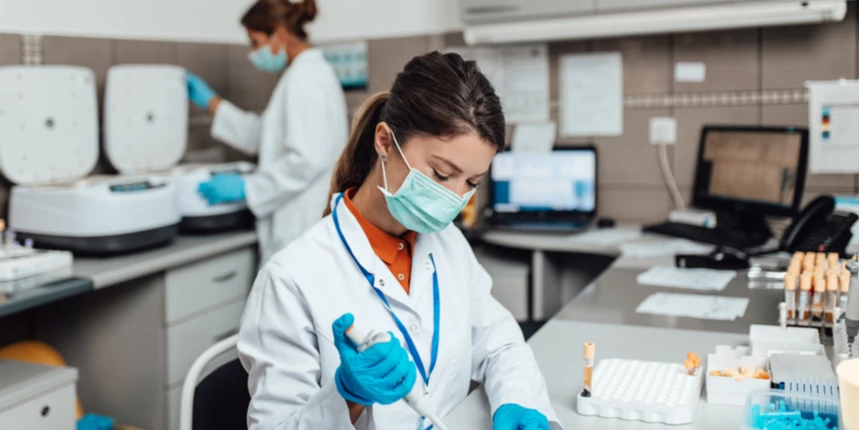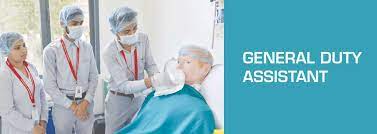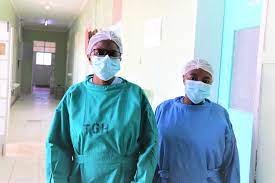Free Blood Bank Technician Course (1year Diploma Course)
Free Blood Bank Technician Course

Blood Bank Technician in the Healthcare Industry is also known as a
phlebotomy technician and Blood Bank Laboratory technician.
Brief Job Description: -Blood Bank Technicians work in a lab to collect,
label and store blood. The blood bank technicians test samples to screen
potential donors, store blood, draws and maintain documentation and records.
They make patients comfortable during the procedure and monitor their vital signs.
They also check compatibility blood before issuing it out for transfusion Blood Bank Technician Course.
Personal Attributes: -This job requires the individual to work in collaboration with
medical laboratory technologist and other members of the healthcare team and
deliver the healthcare services as directed. The individual should be result oriented.
The individual should also be able to demonstrate clinical skills, communication skills
and ethical behaviour. Individuals must always perform their duties in a calm, reassuring and efficient manner.

Assist nurse in checking vital parameters Blood Bank Technician Course:-

To be competent, the user/individual on the job must be able to:
PC1. Take measurements of pulse, blood pressure, and body temperature
and/or other vital parameters, as appropriate
PC2. Recognise the level of vital parameters under which blood donation could be performed
PC3. Identify and manage potential and actual risksto the safety ofthe potential donor
PC4. Accurately document the collected vital parameters in a timely manner
PC5. Accurately communicate the assessment Blood Bank Technician Course regarding the suitability of the individualto
donate blood PC6. Establish trust and rapport with colleagues
PC7. Maintain competence within one’srole and field of practice
PC8. Promote and demonstrate good practice as an individual and as a team member at all times
PC9. Identify and manage potential and actual risksto the quality and safety of work
PC10. Evaluate and reflect on the quality of one’s work and make continuing improvements
Collect blood donor’s medical history and screen donors Blood Bank Technician Course:-

To be competent, the user/individual on the job must be able to:
PC1. Interview the potential blood donors and collectrelevant information about theirmedical history
PC2. Determine whetherthe individual can safely donate blood without experiencing any negative health effect
PC1. Accurately document the collected medical history of the potential donor in a timelymanner
PC2. Accurately communicate whetherthe individual issuitable to donate blood
PC3. Establish trust and rapport with colleagues
PC4. Defer or reject donor based on the current vitals and medical history example
if the donor hastaken some unacceptable medicines, vaccinations, or has suffered fromsome diseases
PC5. Maintain competence within one’srole and field of practice
PC6. Promote and demonstrate good practice as an individual and as a team member at all times
PC7. Identify and manage potential and actual risksto the quality and safety of work
PC8. Evaluate and reflect on Blood Bank Technician Course the quality of one’s work and make continuing improvements
Draw Blood from Donor Blood Bank Technician Course:-

PC1. Select equipment and supplies needed to collect blood by venipuncture procedure
PC2. Understand the importance of antiseptics and Blood Bank Technician Course disinfectants maintain safety
PC3. Efficiently perform proceduresto locate veinsto puncture
PC4. Identify types of additives used in blood collection
PC5. Identify anatomicalsite to performvenepuncture
PC6. Prepare the anatomicalsite and clean the site to perform venepuncture
PC7. Perform venepuncture procedure as perthe guidelines Blood Bank Technician Course.
PC8. Ensure timely implementation of appropriate proceduresto collect blood
PC9. Ensure thatstandard precautionsforinfection prevention and control, and otherrelevant health and safety measures are taken
PC10. Recognise the boundary of one’srole and responsibility
PC11. Seek supervision from superior when situations are beyond one’s competence andauthority
PC12. Establish trust and rapport with colleagues
PC13. Maintain competence within one’srole and field of practice
PC14. Promote and demonstrate good practice as an individual and as a team member at all times
PC15. Identify and manage potential and actualrisksto the quality and safety of practice
PC16. Evaluate and reflect on the quality of one’s work and make continuing improvements
Monitor donor during the donation procedure Blood Bank Technician Course:-
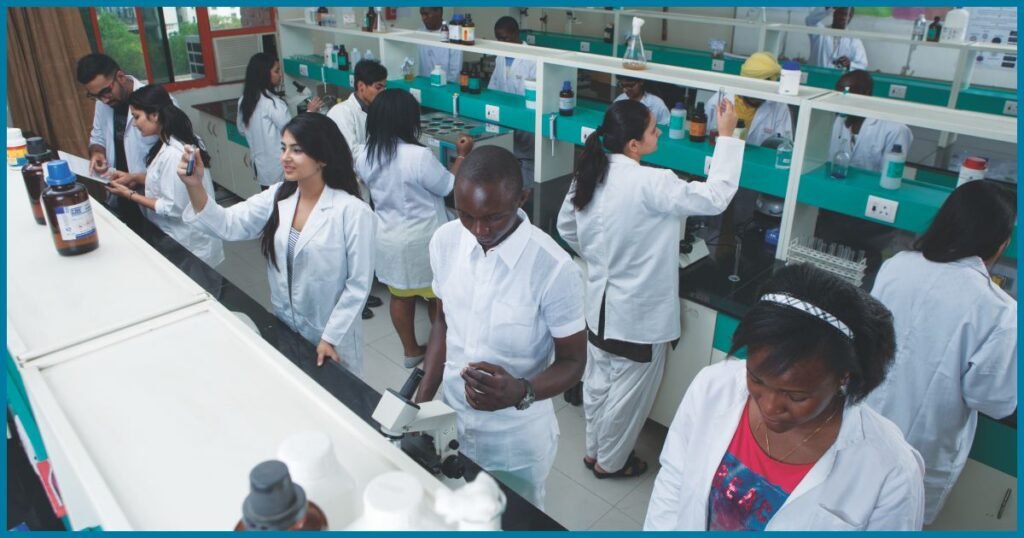
PC1. Monitorthe donors’ condition and behaviour for any sign of adverse reaction event
PC2. Identify any sign of occurrence of an adverse event during the blood donation procedure
PC3. Respond to any signs of adverse reaction of the donor and take Blood Bank Technician Course appropriate action, which may require to halt the procedure
PC4. Effectively report the sign of occurrence of an adverse event to the appropriate member of the team, in a timely manner
PC5. Identify need of re‐adjustment of the needle in situation of change in flow of blood
PC6. Identify any problem in the blood collection procedure, like problem with the
blood collection packs or harnesses, and take required action immediately
PC7. Record allrelevantinformation clearly and appropriately
PC8. Ensure timely implementation of appropriate proceduresto collect blood
PC9. Ensure thatstandard precautionsforinfection prevention and control and
otherrelevant health and safety measures are taken
PC1. Recognise the boundary of one’srole and responsibility Blood Bank Technician Course.
PC2. Seek supervision from superior when situations are beyond one’s competence andauthority
PC3. Establish trust and rapport with colleagues
PC4. Maintain competence within one’srole and field of practice
PC5. Promote and demonstrate good practice as an individual and as a team member at all times
PC6. Identify and manage potential and actual risksto the quality and safety of practice
PC7. Evaluate and reflect on the quality of one’s work and make continuing improvements

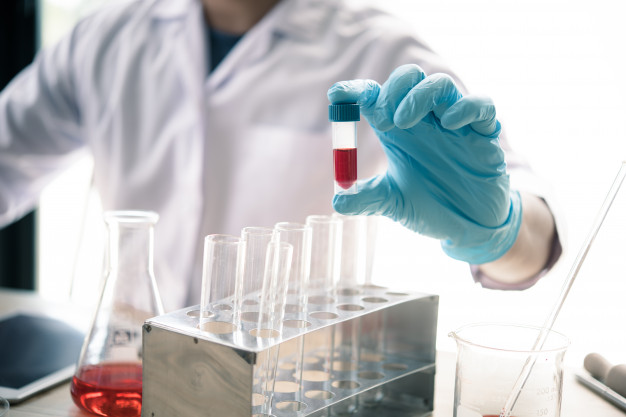
Screen donated blood for presence of any infection Blood Bank Technician Course:-
To be competent, the user/individual on the job must be able to:
PC1. Test the blood donation for ABO (blood type), Rh groups(i.e. positive or negative) and red cell antibodies
PC2. Screen the blood donation for any infectious disease, like HIV, Hepatitis B, Hepatitis C,syphilis, Malaria, Dengue etc.
PC3. Record and report results ofscreening clearly and accurately, as per the guidelines
PC4. Ensure timely implementation of appropriate procedures
PC5. Ensure thatstandard precautionsforinfection prevention and control and other
relevant health and safety measures are taken PC6. Establish trust and rapport with colleagues
PC7. Maintain competence within one’srole and Blood Bank Technician Course field of practice
PC8. Promote and demonstrate good practice as an individual and as a team member at all times
PC9. Identify and manage potential and actual risksto the quality and safety of practice
PC10. Evaluate and reflect on the quality of one’s work and make continuing improvements
Blood Bank Technician Course Document, Label and Store Blood Donations:-
To be competent, the user/individual on the job must be able to:
PC1. Efficiently handle the blood donations and perform relevant documentations
PC2. Identify any defect with the blood packs, like damaged pack, pack not sealed properlyetc.
PC3. Record and report the defect identified with the blood pack to the concerned authority
PC4. Clearly and accurately document allthe relevant information Blood Bank Technician Course.
PC5. Properly labelthe blood donations
PC6. Safely handle and store the blood donations Free Blood Bank Technician Course
PC7. Assistin ensuring timely implementation of appropriate procedures
PC8. Establish trust and rapport with colleagues
PC9. Maintain competence within one’srole and field of practice
PC10. Ensure thatstandard precautionsforinfection prevention and control and
otherrelevant health and safety measures are taken
PC11. Promote and demonstrate good practice as an individual and as a team member at all times
PC12. Identify and manage potential and actualrisksto the quality and safety of practice
PC13. Evaluate and reflect on the quality of one’s work and make continuing improvements
Blood Bank Technician Check Compatibility of Blood:- To be competent, the user/individual on the job must be able to:
PC1. Identify the blood requirements of a patient, and the minimum information
required to correctly identify the blood product
PC2. Immediately respond to the demand of a blood fortransfusion
PC3. Ensure timely collection of correct blood product from the storage area
PC4. Check and verify the details ofthe blood with the patient requirements before issuing out the blood
PC5. Clearly and accurately document allthe relevant information
PC6. Safely handle the blood products
PC7. Ensure thatstandard precautionsforinfection prevention and control and
otherrelevant health and safety measures are taken
PC8. Establish trust and rapport with colleagues
PC9. Maintain competence within one’srole and field of practice
PC10. Promote and demonstrate good practice as an individual and as a team member at all times
PC11. Identify and manage potential and actualrisksto the quality and safety of practice
PC12. Evaluate and reflect on the quality of one’s work and make continuing improvements

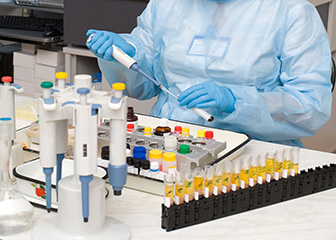
Act Blood Bank Technician Course within the limits of one’s competence and authority:-
o be competent, the user/individual on the job must be able to:
PC1. Adhere to legislation, protocols and guidelinesrelevant to one’srole and field of practice
PC2. Work within organisationalsystems and requirements as appropriate to one’s role
PC3. Recognise the boundary of one’srole and responsibility and seek supervision
when situations are beyond one’s competence and authority
PC4. Maintain competence within one’srole and field of practice Blood Bank Technician Course.
PC5. Use relevantresearch based protocols and guidelines as evidence to inform one’spractice
PC6. Promote and demonstrate good practice as an individual and as a team member at all times
PC7. Identify and manage potential and actualrisksto the quality and safety of practice
PC8. Evaluate and reflect on the quality of one’s work and make continuing improvements
Work effectively with others:- To be competent, the user/individual on the job must be able to:
PC1. Communicate with other people clearly and effectively
PC2. Integrate one’s work with other people’s work effectively
PC3. Pass on essential information to other people on timely basis
PC4. Work in a way thatshowsrespect for other people
PC5. Carry out any commitments made to Blood Bank Technician Course other people
PC6. Reason out the failure to fulfil commitment
PC7. Identify any problems with team members and other people and take the initiative to solve these problems
PC8. Follow the organisation’s policies and procedures
Manage work to meetrequirements:-
To be competent, the user/individual on the job must be able to:
PC1. Clearly establish, agree, and record the work requirements Blood Bank Technician Course.
PC2.Utilise time effectively
PC3. Ensure his/her work meetsthe agreed requirements
PC4. Treat confidential information correctly
PC5. Work in line with the organisation’s procedures and policies and within the limits of his/herjob role
Maintain a safe, Blood Bank Technician Course healthy, and secure working environment:-
To be competent, the user/individual on the job must be able to:
PC1. Identify individualresponsibilitiesin relation tomaintaining workplace health safety and security requirements
PC2. Comply with health,safety and security proceduresforthe workplace
PC3. Report any identified breachesin health,safety, and security proceduresto the designatedperson
PC4. Identify potential hazards and breaches ofsafe work practices
PC5. Correct any hazardsthat individual can deal with safely, competently and within the limits of authority
PC6. Promptly and accurately report the hazardsthat individual is not allowed to deal with, to the relevant
person and warn other people who may get affected
PC7. Follow the organisation’s emergency procedures promptly, calmly, and efficiently
PC8. Identify and recommend opportunitiesforimproving health,safety, and security to the designated person
PC9. Complete any health and safety recordslegibly and accurately
Practice code of conduct Blood Bank Technician Course while performing duties:-
To be competent, the user/individual on the job must be able to:
PC1. Adhere to protocols and guidelinesrelevant to the role and field of practice
PC2. Work within organisational systems and requirements as appropriate to the role
PC3. Recognise the boundary of the role and responsibility and seek supervision
when situations are beyond the competence and authority
PC4. Maintain competence within the role and field of practice Blood Bank Technician Course.
PC5. Use protocols and guidelinesrelevant to the field of practice
PC6. Promote and demonstrate good practice as an individual and as a team member at all times
PC7. Identify and manage potential and actualrisksto the quality and patientsafety
PC8. Maintain personal hygiene and contribute actively to the healthcare ecosystem
Follow biomedical Blood Bank Technician Course waste disposal protocols:-
To be competent, the user/individual on the job must be able to:
PC1. Follow the appropriate procedures, policies and protocolsforthe method of
collection and containment level according to the waste type
PC2. Apply appropriate health and safetymeasures and standard precautionsfor
infection prevention and control and personal protective equipmentrelevant to the type and category of waste
PC3. Segregate the waste material Blood Bank Technician Course from work arising line with current legislation
andorganisationalrequirements
PC4. Segregation should happen at source with proper containment, by using different color
coded binsfor different categories of waste
PC5. Check the accuracy of the labelling that Blood Bank Technician Course identifies the type and content of waste
PC6. Confirm suitability of containers for any required course of action appropriate to the type of waste disposal
PC7. Check the waste has undergone the required processesto make itsafe for transport and disposal
PC8. Transport the waste to the disposal site, Blood Bank Technician Course taking into consideration its associated risks
PC9. Report and deal with spillages Blood Bank Technician Course and contamination in accordance with current legislation and procedures
PC10. Maintain full, accurate and legible records of information and store in correct location in line with
current legislation, guidelines, local policies and protocols
Followinfection control policies and procedures:-

To be competent, the user/individual on the job must be able to:
PC1. Preform the standard precautionsto prevent the spread of infection in
accordancewithorganisationrequirements Blood Bank Technician Course.
PC2. Preform the additional precautions when standard precautions alone may not be sufficient to prevent transmission of infection
PC3. Minimise contamination ofmaterials, equipment and instruments by aerosols and splatter
PC4. Identify infection risks and implement an appropriate response within own role and
responsibility PC5. Document and report activities and tasksthat put patients and/or other workers atrisk
PC6. Respond appropriately to situationsthat pose an infection risk in accordance with the policies and procedures ofthe organization
PC7. Follow proceduresforrisk control and risk containment forspecific risks
PC8. Follow protocolsfor care following exposure to blood or other body fluids as required
PC9. Place appropriate signs when and where appropriate
PC10. Remove spillsin accordance with the policies and procedures ofthe organization
PC11. Maintain hand hygiene by washing hands before and after patient contact and/
or after any activity likely to cause contamination
PC12. Follow handwashing procedures
PC13. Implement hand care procedures
PC14. Cover cuts and abrasions with water‐proof dressings and change as necessary
PC15. Wear personal protective clothing and equipment that complies with Indian Standards,
and is appropriate for the intended use
PC16. Change protective clothing and gowns/aprons daily, more frequently ifsoiled and where
appropriate, after each patient contact
PC17. Demarcate and maintain clean and contaminated zonesin all aspects of health care work
PC18. Confine records, materials and medicamentsto a well‐designated clean zone
PC19. Confine contaminated instruments and equipmentto a well‐designated contaminated zone
PC20. Wear appropriate personal protective clothing and equipmentin accordance with
occupational health and safety policies and procedures when handling waste
PC21. Separate waste at the point where it has been generated and dispose of into waste
containersthat are colour coded and identified
PC22. Store clinical or related waste in an area that is accessible only to authorised persons
PC23. Handle, package, label,store, transport and dispose of waste appropriately to minimise
potential for contact with the waste and to reduce the risk to the environmentfrom
accidental
release
PC24. Dispose of waste safely in accordance with policies and procedures ofthe
organisationandlegislativerequirements
PC25. Wear personal protective clothing and equipment during cleaning procedures
PC26. Remove all dust, dirt and physical debrisfrom work surfaces
PC27. Clean all work surfaces with a neutral detergent and warm water solution Blood Bank Technician Course before and after each session or when visibly soiled
PC28.Decontaminate equipmentrequiring special processing in accordance with
qualitymanagementsystemsto ensure full compliance with cleaning, disinfectionand sterilisation protocols
PC29. Dry all work surfaces before and after use
PC30. Replace surface covers where applic
PC31. Maintain and store cleaning equipment
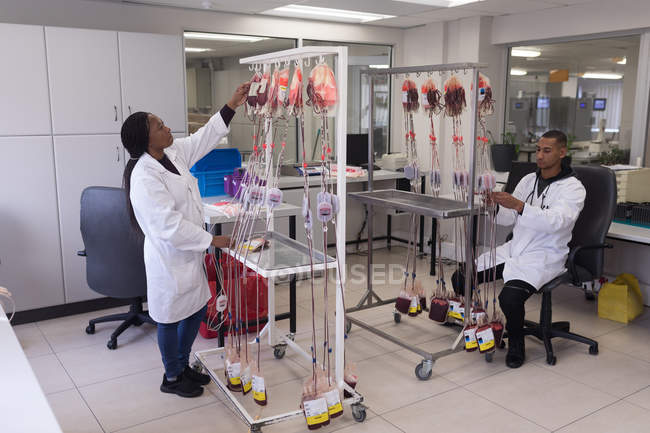
Monitor and assure quality:-
To be competent, the user/individual on the job must be able to:
PC1. Conduct appropriate research and analysis
PC2. Evaluate potentialsolutionsthoroughly Blood Bank Technician Course.
PC3. Participate in education programs which include currenttechniques, technology and trends pertaining to the dental industry
PC4. Read Dental hygiene, dental and medical publications related to quality consistently and thoroughly
PC5. Report any identified breachesin health,safety, and security proceduresto the designated person
PC6. Identify and correct any hazardsthat he/she can deal with safely, competently and within the limits of his/her authority
PC7. Promptly and accurately report any hazardsthat he/she is not allowed to deal with to the
relevant person and warn other people who may be affected
PC8. Follow the organisation’s emergency procedures promptly, calmly, and efficiently
PC9. Identify and recommend opportunitiesforimproving health,safety, and security to the designated person
PC10. Complete any health and safety recordslegibly and accurately
Guidelines for Assessment:-
1. Criteria for assessment for each Qualification Blood Bank Technician Course Pack will be created by the Sector
Skill Council. Each Performance Criteria (PC) will be assigned marks proportional to its importance in NOS.
SSC will also lay down proportion of marks for Theory and Skills Practical for each
PC 2. The assessment for the theory part will be based on knowledge bank of questions created by the
SSC 3. Individual assessment agencies will create unique question papers for theory part for each
candidate at each examination/training center (as per assessment criteria below)
4. Individual assessment agencies will create unique evaluations Blood Bank Technician Course for skill practical for every student
at each examination/training center based on this criteria
5. To pass the Qualification Pack, every trainee should score as per assessment grid.
6. In case of successfully passing only certain number of NOS’s, the trainee is eligible to take
subsequent assessment on the balance NOS’s to pass the Qualification Pack
Assist nurse in checking vital parameters:-
PC1. Take measurements of pulse, blood pressure, and body temperature and/or other vital parameters, as appropriate
PC2. Recognise the level of vital parameters under which blood donation could be performed
PC3. Identify and manage potential and actual risks to the safety of the potential donor
PC4. Accurately document the collected vital parameters in a timely manner
PC5. Accurately communicate the assessment regarding the suitability of the individual to donate blood
PC6. Establish trust and rapport with Blood Bank Technician Course colleagues
PC7. Maintain competence within one’s role and field of practice
PC8. Promote and demonstrate good practice Blood Bank Technician Course as an individual and as a team member at all times
PC9. Identify and manage potential and actual risks to the quality and safety of work
PC10. Evaluate and reflect on the quality of one’s work and make continuing improvements
Collect blood donor’s medical history and screen donors:-
PC1. Interview the potential blood donors and collect relevant information about their medical history
PC2. Determine whether the individual Blood Bank Technician Course can safely donate blood without experiencing any negative health effect
PC3. Accurately document the collected medical history of the potential donor in a timely manner
PC4. Accurately communicate whether the individual is suitable to donate blood
PC5. Establish trust and rapport Blood Bank Technician Course with colleagues
PC6. Defer or reject donor based on the current vitals and medical history example if the donor has taken some unacceptable medicines, vaccinations, or has suffered from some diseases
PC7. Maintain competence within one’s role and field of practice
PC8. Promote and demonstrate good practice as an individual and as a team member at all times
PC9. Identify and manage potential and actual risks to the quality and safety of work
PC10. Evaluate and reflect on the quality of one’s work and make continuing improvements
Draw Blood from Donor:-
PC1. Select equipment and supplies needed to collect blood by venipuncture procedure
PC2. Understand the importance of antiseptics and disinfectants to maintain safety
PC3. Efficiently perform procedures to locate veins Blood Bank Technician Course to puncture Blood Bank Technician Course.
PC4. Identify types of additives used in blood collection
PC5. Identify anatomical site to perform venepuncture
PC6. Prepare the anatomical site and clean the site to perform venepuncture
PC7. Perform venepuncture procedure as per the guidelines
PC8. Ensure timely implementation of appropriate procedures to collect blood
PC9. Ensure that standard precautions for infection prevention and control, and other relevant health and safety measures are taken
PC10. Recognise the boundary of one’s role and responsibility
PC11. Seek supervision from superior when situations are beyond one’s competence and authority
PC12. Establish trust and rapport with colleagues
PC13. Maintain competence within one’s role and field of practice
PC14. Promote and demonstrate good practice as an Blood Bank Technician Course individual and as a team member at all times
PC15. Identify and manage potential and actual risks to the quality and safety of practice
PC16. Evaluate and reflect on the quality of one’s work and make continuing improvements
Monitor donor during the donation procedure:-
PC1. Monitor the donors’ condition and behaviour for any sign of adverse reaction event
PC2. Identify any sign of occurrence of an adverse event during the blood donation procedure
PC3. Respond to any signs of adverse reaction of the donor and take appropriate action, which may require to halt the procedure
PC4. Effectively report the sign of occurrence of an adverse event to the appropriate member of the team, in a timely manner
PC5. Identify need of re-adjustment of the needle in Blood Bank Technician Course situation of change in flow of blood
PC6. Identify any problem in the blood collection procedure, like problem with the blood collection packs or
harnesses, and take required action immediately
PC7. Record all relevant information clearly and appropriately
PC8. Ensure timely implementation of appropriate procedures to collect blood
PC9. Ensure that standard precautions for infection prevention and control and other relevant
health and safety measures are taken
PC10. Recognise the boundary of one’s role and responsibility
PC11. Seek supervision from superior when situations Blood Bank Technician Course are beyond one’s competence and authority
PC12. Establish trust and rapport with colleagues
PC13. Maintain competence within one’s role and field of practice
PC14. Promote and demonstrate good practice as an Blood Bank Technician Course individual and as a team member at all times
PC15. Identify and manage potential and actual risks to the quality and safety of practice
PC16. Evaluate and reflect on the quality of one’s Blood Bank Technician Course work and make continuing improvements
Screen donated blood for presence of any infection:-
PC1. Test the blood donation for ABO (blood type), Rh groups (i.e. positive or negative) and red cell antibodies
PC2. Screen the blood donation for any Blood Bank Technician Course infectious disease, like HIV, Hepatitis B,Hepatitis C, syphilis, Malaria, Dengue etc
PC3. Record and report results of screening clearly and accurately, as per the guidelines
PC4. Ensure timely Blood Bank Technician Course implementation of appropriate procedures
PC5. Ensure that standard Blood Bank Technician Course precautions for infection prevention and control and other
relevant health and safety measures are taken
PC6. Establish trust and rapport with colleagues
PC7. Maintain competence within one’s role and field of practice
PC8. Promote and demonstrate good practice as an individual and as a team member at all times
PC9. Identify and manage potential and actual risks to the quality and safety of practice
PC10. Evaluate and reflect on the quality Blood Bank Technician Course of one’s work and make continuing improvements
Document, Label and Store Blood Donations:-
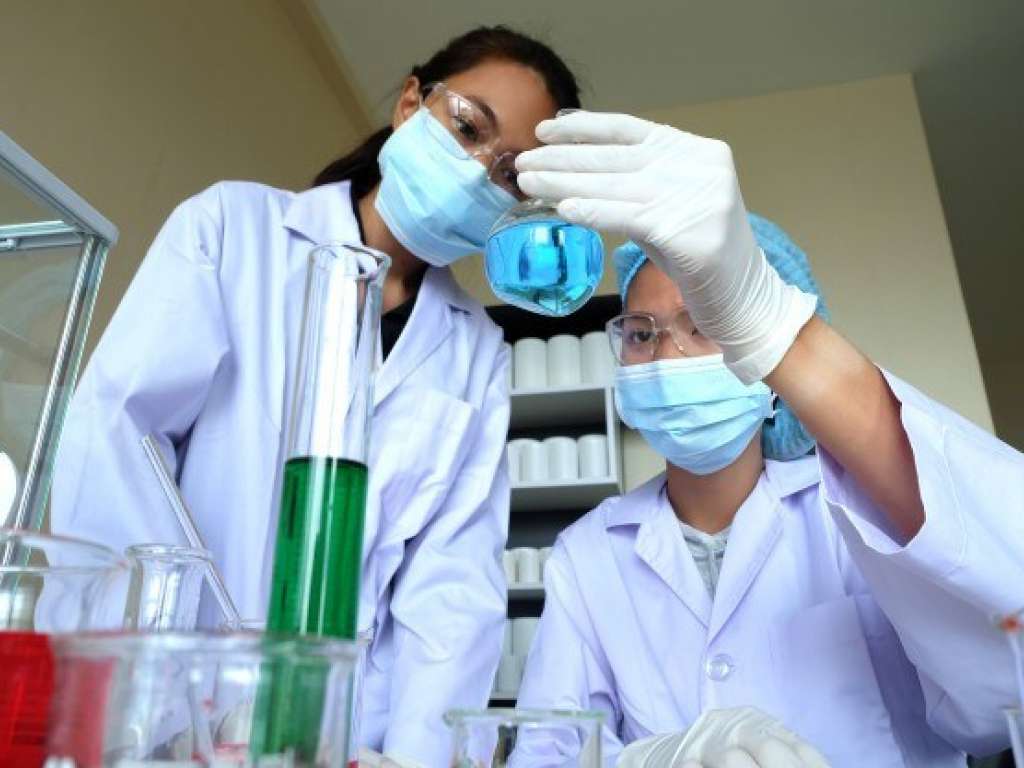
PC1. Efficiently handle the blood donations Blood Bank Technician Course and perform relevant documentations
PC2. Identify any defect with the blood packs, like damaged pack, pack not sealed properly etc
PC3. Record and report the defect identified with the blood pack to the concerned authority
PC4. Clearly and accurately document all the Blood Bank Technician Course relevant information
PC5. Properly label the blood donations
PC6. Safely handle and store the blood donations
PC7. Assist in ensuring timely Blood Bank Technician Course implementation of appropriate procedures
PC8. Establish trust and rapport with colleagues
PC9. Maintain competence within one’s role and field of practice
PC10. Ensure that standard precautions for infection prevention and control and other relevant health and safety measures are taken
PC11. Promote and demonstrate good practice as an individual and as a team member at all times
PC12. Identify and manage potential and actual risks to the quality and safety of practice
PC13. Evaluate and reflect on the quality of one’s work and make continuing improvements
(Follow infection control policies and procedures):-
PC1. Preform the standard precautions to prevent the spread of infection in accordance with organisation requirements
PC2. Preform the additional precautions when standard precautions alone may not be sufficient to prevent transmission of infection
PC3. Minimise contamination of materials, equipment and instruments by aerosols and splatter
PC4. Identify infection risks and implement an appropriate response within own role and responsibility
PC5. Document and report activities and tasks that put patients and/or other workers at risk
PC6. Respond appropriately to situations that pose an infection risk in accordance with the policies and procedures of the organization
PC7. Follow procedures for risk control and risk containment for specific risks
PC8. Follow protocols for care following exposure to blood or other body fluids as required
PC9. Place appropriate signs when and where appropriate
PC10. Remove spills in accordance with the policies and procedures of the organization
PC11. Maintain hand hygiene by washing hands before and after patient contact and/or after any activity likely to cause contamination
PC12. Follow hand washing procedures
PC13. Implement hand care procedures
PC14. Cover cuts and abrasions with water -proof dressings and change as necessary
PC15. Wear personal protective clothing and equipment that complies with Indian Standards, and is appropriate for the intended use
PC16. Change protective clothing and gowns/aprons daily, more frequently if soiled and where appropriate, after each patient contact
PC17. Demarcate and maintain clean and contaminated zones in all aspects of health care work
PC18. Confine records, materials and medicaments to a well -designated clean zone
PC19. Confine contaminated instruments and equipment to a well -designated contaminated zone
PC20. Wear appropriate personal protective clothing and equipment in accordance with occupational health and safety policies and procedures when handling waste
PC21. Separate waste at the point where it has been generated and dispose of into waste containers that are colour coded and identified
PC22. Store clinical or related waste in an area that is accessible only to authorised persons
PC23. Handle, package, label, store, transport and dispose of waste appropriately to minimise potential for contact with the waste and to reduce the risk to the environment from accidental release
PC24. Dispose of waste safely in accordance with policies and procedures of the organisation and legislative requirements
PC25. Wear personal protective clothing and equipment during cleaning procedures
PC26. Remove all dust, dirt and physical debris from work surfaces
PC27. Clean all work surfaces with a neutral detergent and warm water solution before and after each session or when visibly soiled
PC28. Decontaminate equipment requiring special processing in accordance with quality management systems to ensure full compliance with cleaning, disinfection and sterilisation protocols
PC29. Dry all work surfaces before and after use
PC31. Maintain and store cleaning equipmen
(Act within the limits of one’s competence and authority):-
PC2. Work within organisational systems and requirements as appropriate to one’s role
PC3. Recognise the boundary of one’s role and responsibility and seek supervision when situations are beyond one’s competence and authority
PC4. Maintain competence within one’s role and field of practice
PC5. Use relevant research based protocols and guidelines as evidence to inform one’s practice
PC6. Promote and demonstrate good practice as an individual and as a team member at all times
PC7. Identify and manage potential and actual risks to the quality and safety of practice
PC8. Evaluate and reflect on the quality of one’s work and make continuing improvements
(Practice Code of conduct while performing duties):-
PC1. Adhere to protocols and guidelines relevant to the role and field of practice
PC2. Work within organisational systems and requirements as appropriate to the role
PC3. Recognise the boundary of the role and responsibility and seek supervision when situations are beyond the competence and authority
PC4. Maintain competence within the role and field of practice
PC5. Use protocols and guidelines relevant to the field of practice
PC6. Promote and demonstrate good practice as an individual and as a team member at all times
PC7. Identify and manage potential and actual risks to the quality and patient safety
PC8. Maintain personal hygiene and contribute actively to the healthcare ecosystem
(Manage work to meet requirements):-
PC1. Clearly establish, agree, and record the work requirements
PC2. Utilise time effectively
PC3. Ensure his/her work meets the agreed requirements
PC4. Treat confidential informationcorrectly
PC5. Work in line with the organisation’s procedures and policies and within the limits of his/her job role
Assistnurse in checking vital parameters:-
PC1. Take measurements of pulse, blood pressure, and body temperature and/or other vital parameters, as appropriate
PC2. Recognise the level of vital parameters under which blood donation could be performed
PC3. Identify and manage potential and actual risks to the safety of the potential donor
PC4. Accurately document the collected vital parameters in a timely manner
PC5. Accurately communicate the assessment regarding the suitability of the individual to donate blood
PC6. Establish trust and rapport with colleagues
PC7. Maintain competence within one’s role and field of practice
PC8. Promote and demonstrate good practice as an individual and as a team member at all times
PC9. Identify and manage potential and actual risks to the quality and safety of work
PC10. Evaluate and reflect on the quality of one’s work and make continuing improvements
Collect blood donor’s medical history and screen donors:-
PC1. Interview the potential blood donors and collect relevant information about their medical history
PC2. Determine whether the individual can safely donate blood without experiencing any negative health effect
PC3. Accurately document the collected medical history of the potential donor in a timely manner
PC4. Accurately communicate whether the individual is suitable to donate blood
PC5. Establish trust and rapport with colleagues
PC6. Defer or reject donor based on the current vitals and medical history example if the donor has taken some unacceptable medicines, vaccinations, or has suffered from some diseases
PC7. Maintain ccompetence within one’s role and field of practice
PC8. Promote and demonstrate good practice as an individual and as a team member at all times
PC9. Identify and manage potential and actual risks to the quality and safety of work
PC10. Evaluate and reflect on the quality of one’s work and make continuing improvements
Draw Blood from Donor:-
PC1. Select equipment and supplies needed to collect blood by venipuncture procedure
PC2. Understand the importance of antiseptics and disinfectants to maintain safety
PC3. Efficiently perform procedures to locate veins to puncture
PC4. Identify types of additives used in blood collection
PC5. Identify anatomical site to perform venepuncture
PC6. Prepare the anatomical site and clean the site to perform venepuncture
PC7. Perform venepuncture procedure as per the guidelines
PC8. Ensure timely implementation of appropriate procedures to collect blood
PC9. Ensure that standard precautions for infection prevention and control, and other relevant health and safety measures are taken
PC10. Recognise the boundary of one’s role and responsibility
PC11. Seek supervision from superior when situations are beyond one’s competence and authority
PC12. Establish trust and rapport with colleagues
PC13. Maintain competence within one’s role and field of practice
PC14. Promote and demonstrate good practice as an individual and as a team member at all times
PC15. Identify and manage potential and actual risks to the quality and safety of practice
PC16. Evaluate and reflect on the quality of one’s work and make continuing improvements
Monitor donor during the donation procedure:-
PC1. Monitor the donors’ condition and behaviour for any sign of adverse reaction event
PC2. Identify any sign of occurrence of an adverse event during the blood donation procedure
PC3. Respond to any signs of adverse reaction of the donor and take appropriate action, which may require to halt the procedure
PC4. Effectively report the sign of occurrence of an adverse event to the appropriate member of the team, in a timely manner
PC5. Identify need of re-adjustment of the needle in situation of change in flow of blood
PC6. Identify any problem in the blood collection procedure, like problem with the blood collection packs or harnesses, and take required action immediately
PC7. Record all relevant information clearly and appropriately
PC8. Ensure timely implementation of appropriate procedures to collect blood
PC9. Ensure that standard precautions for infection prevention and control and other relevant health and safety measures are taken
PC10. Recognise the boundary of one’s role and responsibility
PC11. Seek supervision from superior when situations are beyond one’s competence and authority
PC12. Establish trust and rapport with colleagues
PC13. Maintain competence within one’s role and field of practice
PC14. Promote and demonstrate good practice as an individual and as a team member at all times
PC15. Identify and manage potential and actual risks to the quality and safety of practice
PC16. Evaluate and reflect on the quality of one’s work and make continuing improvements
Screen donated blood for presence of any infection:-
PC1. Test the blood donation for ABO (blood type), Rh groups (i.e. positive or negative) and red cell antibodies
PC2. Screen the blood donation for any infectious disease, like HIV, Hepatitis B,Hepatitis C, syphilis, Malaria, Dengue etc
PC3. Record and report results of screening clearly and accurately, as per the guidelines
PC4. Ensure timely implementation of appropriate procedures
PC5. Ensure that standard precautions for infection prevention and control and other relevant health and safety measures are taken
PC6. Establish trust and rapport with colleagues
PC7. Maintain competence within one’s role and field of practice
PC8. Promote and demonstrate good practice as an individual and as a team member at all times
PC9. Identify and manage potential and actual risks to the quality and safety of practice
PC10. Evaluate and reflect on the quality of one’s work and make continuing improvements
Document, Label and Store Blood Donations:-
PC1. Efficiently handle the blood donations and perform relevant documentations
PC2. Identify any defect with the blood packs, like damaged pack, pack not sealed properly etc.
PC3. Record and report the defect identified with the blood pack to the concerned authority
PC4. Clearly and accurately document all the relevant information
PC5. Properly label the blood donations
PC6. Safely handle and store the blood donations
PC7. Assist in ensuring timely implementation of appropriate procedures
PC8. Establish trust and rapport with colleagues
PC9. Maintain competence within one’s role and field of practice
PC10. Ensure that standard precautions for infection prevention and control and other relevant health and safety measures are taken
PC11. Promote and demonstrate good practice as an individual and as a team member at all times
PC12. Identify and manage potential and actual risks to the quality and safety of practice
PC13. Evaluate and reflect on the quality of one’s work and make continuing improvements
Check Compatibility of Blood:-
PC1. Identify the blood requirements of a patient, and the minimum information required to correctly identify the blood product
PC2. Immediately respond to the demand of a blood for transfusion
PC3. Ensure timely collection of correct blood product from the storage area
PC4. Check and verify the details of the blood with the patient requirements before issuing out the blood
PC5. Clearly and accurately document all the relevant information
PC6. Safely handle the blood products
PC7. Ensure that standard precautions for infection prevention and control and other relevant health and safety measures are taken
PC8. Establish trust and rapport with colleagues
PC9. Maintain competence within one’s role and field of practice
PC10. Promote and demonstrate good practice as an individual and as a team member at all times
PC11. Identify and manage potential and actual risks to the quality and safety of practice
PC12. Evaluate and reflect on the quality of one’s work and make continuing improvement
(Follow infection control policies and procedures):-
PC1. Preform the standard precautions to prevent the spread of infection in accordance with organisation requirements
PC2. Preform the additional precautions when standard precautions alone may not be sufficient to prevent transmission of infection
PC3. Minimise contamination of materials, equipment and instruments by aerosols and splatter
PC4. Identify infection risks and implement an appropriate response within own role and responsibility
PC5. Document and report activities and tasks that put patients and/or other workers at risk
PC6. Respond appropriately to situations that pose an infection risk in accordance with the policies and procedures of the organization
PC7. Follow procedures for risk control and risk containment for specific risks
PC8. Follow protocols for care following exposure to blood or other body fluids as required
PC9. Place appropriate signs when and where appropriate
PC10. Remove spills in accordance with the policies and procedures of the organization
PC11. Maintain hand hygiene by washing hands before and after patient contact and/or after any activity likely to cause contamination
PC12. Follow hand washing procedures
PC13. Implement hand care procedures
PC14. Cover cuts and abrasions with water-proof dressings and change as necessary
PC15. Wear personal protective clothing and equipment that complies with Indian Standards, and is appropriate for the intended use
PC16. Change protective clothing and gowns/aprons daily, more frequently if soiled and where appropriate, after each patient contact
PC17. Demarcate and maintain clean and contaminated zones in all aspects of health care work
PC18. Confine records, materials and medicaments to a welldesignated clean zone
PC19. Confine contaminated instruments and equipment to a well-designated contaminated zone
PC20. Wear appropriate personal protective clothing and equipment in accordance with occupational health and safety policies and procedures when handling waste
PC21. Separate waste at the point where it has been generated and dispose of into waste containers that are colour coded and identified
PC22. Store clinical or related waste in an area that is accessible only to authorised persons
PC23. Handle, package, label, store, transport and dispose of waste appropriately to minimise potential for contact with the waste and to reduce the risk to the environment from accidental release
Technical Knowledge:- The user/individual on the job needsto know and understand how to:
KB1. Evaluate treatment goals, process and outcomes
KB2. Identify problems/deficienciesindental hygiene treatment goals, processes andoutcomes
KB3. Accurately identify problemsin dental hygiene care
KB4. Conductresearch
KB5. Select and implement proper hygiene interventions
KB6.Obtain informed consent
KB7. Conduct an honestself‐evaluation to identify personal and professional strengths andweaknesses KB8. Access and interpret medical, and scientific literature
KB9.Apply human needs/motivationaltheory
KB10. Provide thorough and efficientindividualised care
KB11. Employmethodsto measure satisfaction
